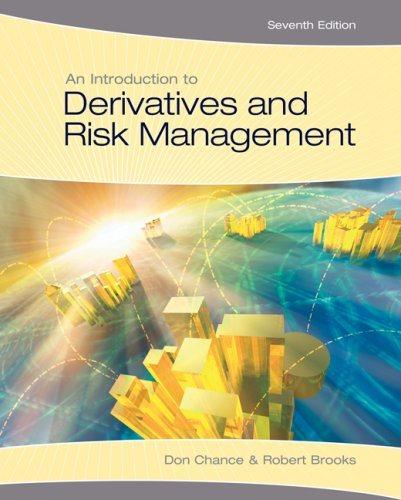Question
ABSTRACT Simmons: A Case Study John McGee (McGee) was an attorney representing a class of Bruin Company shareholders who sued Astro, Inc. alleging improprieties by
ABSTRACT
Simmons: A Case Study
John McGee ("McGee") was an attorney representing a class of Bruin Company shareholders who sued Astro, Inc. alleging improprieties by Astro, Inc. in its merger with Bruin Company The Court approved the settlement and PCQ, LLP, a CPA firm, was appointed to administer claims. Alfred Simmons, CPA, a senior accountant at PCQ, participated with five non-employees of PCQ in a scheme to present false claims for payment from the settlement fund, resulting in the misappropriation of more than $6 million from the fund
BACKGROUND
In 2012, the Court appointed PCQ as the claims administrator for Right Field based on McGee's request. On November 3, 2014, the Court approved the terms of the settlement, which established a settlement fund in the amount of $650 million. PCQ was responsible for examining submitted claims, distinguishing legitimate and illegitimate claims, and disbursing proceeds to authentic claimants. Alfred Simmons, in his position with PCQ, was employed to assist in evaluating submitted claims. His duties included reviewing claim documents and addressing issues that arose with the claimants. He submitted fraudulent claims, anticipating payment from the settlement fund.
On May 13, 2016, McGee filed a motion for distribution of the settlement funds. PCQ provided an affidavit stating that it had examined the claims and concluded that they were "properly completed, signed, and documented." The Court granted the motion for distribution and ordered distribution in accordance with PCQ's examination and calculations. The distribution included payments of over $6 million based on fraudulent claims authorized by PCQ. At all times relevant to the claims, Simmons was employed by PCQ as a certified public accountant assisting in the evaluation of submitted claims. He was acting within the scope of his employment duties with PCQ.
By virtue of his position with PCQ, Simmons had access to all claim documentation. Simmons was responsible for reviewing claim documents to determine whether the claimant was entitled to recovery. The conspirators took extravagant steps to carry on the fraud. They created false documentation to support their claims. Specifically, they established shell companies to submit claims, using fake identities for company executives. They were not limited by geographical boundaries, some of the shell companies were established in foreign countries. They established bank accounts and created virtual offices (including mailing addresses and phone numbers) for each shell company. The conspirators received mail and phone calls at the virtual offices. To complete the fraud, the conspirators created bogus statements from a false brokerage account and other supporting financial documentation to document entitlement to a share of the class action settlement.
The scheme was organized by John Black. Black had no relationship with PCQ. Black recruited the other conspirators and Simmons to assist him. As an insider, Simmons was able to hide it from other firm employees, ensuring the fraud's success. Simmons used his inside knowledge to advise the outside conspirators regarding impending deadlines. He also provided confidential documents to assist in the preparation of false claims. He reviewed the false claims once submitted and gave advice regarding amendments or corrections. Simmons authorized payment of the false claims, and in some instances his actions ensured that other PCQ employees would approve the claims. Simmons provided detailed guidance to Black regarding when and how to submit claims claims including the supporting documentation needed to boost the payout. For his efforts, Simmons received roughly 10% of the proceeds from the false claims. Also, Black purchased an S class Mercedes sedan for Simmons and paid the federal income taxes on Simmons' fraud proceeds.
Based on Simmons' recommendation, Black hired Alice Hohn, an attorney, so the false claims would appear to be genuine. Alice Hohn "represented" the shell companies, submitted claims, and collected proceeds of the fraud on their account. She collected and distributed scheme proceeds under the guidance of Black. For example, Hohn received in excess of $8 million for one claim for one shell company. Hohn then deposited these funds into her law firm's trust account and then distributed the proceeds to Black. She was compensated $150,000 for her efforts.
Simmons was charged with laundering money laundering and income tax fraud. Ultimately, he pled guilty to all counts and agreed to 72 months in prison. He also agreed to pay restitution.
REQUIREMENTS:
Disregard the legal and civil implications of this case. Assume that PCQ followed their standard hiring practices, and Simmons had successfully participated in all required firm training.
-
Please discuss how the AICPA Code of Professional Conduct applies to PCQ. Correctly, which sections of the AICPA Code of Professional Conduct apply to PCQ in this situation?
-
Did the partners at PCQ follow the AICPA Code of Professional Conduct? Support your answer.
-
What is PCQ's responsibility after the fraud has been committed and discovered? Support your answer.
Please provide links to any sources used. Thanks!
Step by Step Solution
There are 3 Steps involved in it
Step: 1

Get Instant Access to Expert-Tailored Solutions
See step-by-step solutions with expert insights and AI powered tools for academic success
Step: 2

Step: 3

Ace Your Homework with AI
Get the answers you need in no time with our AI-driven, step-by-step assistance
Get Started


